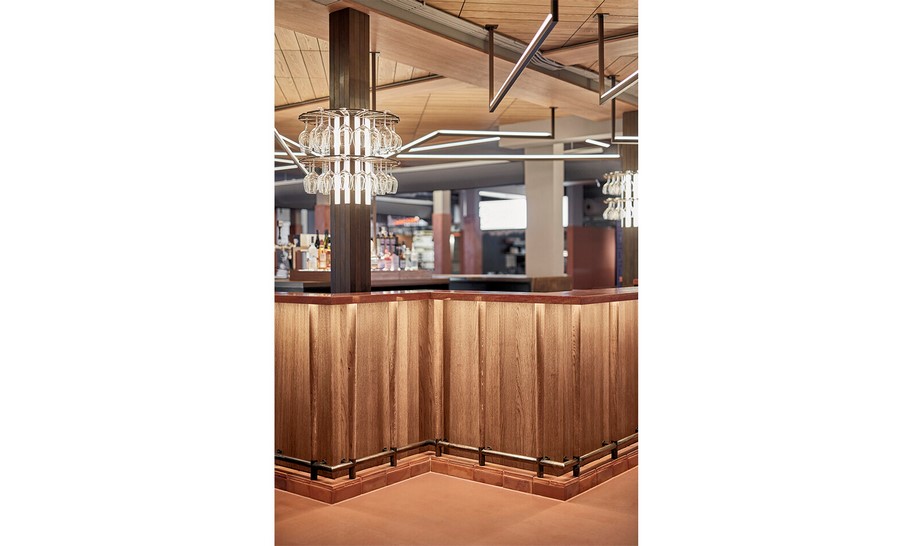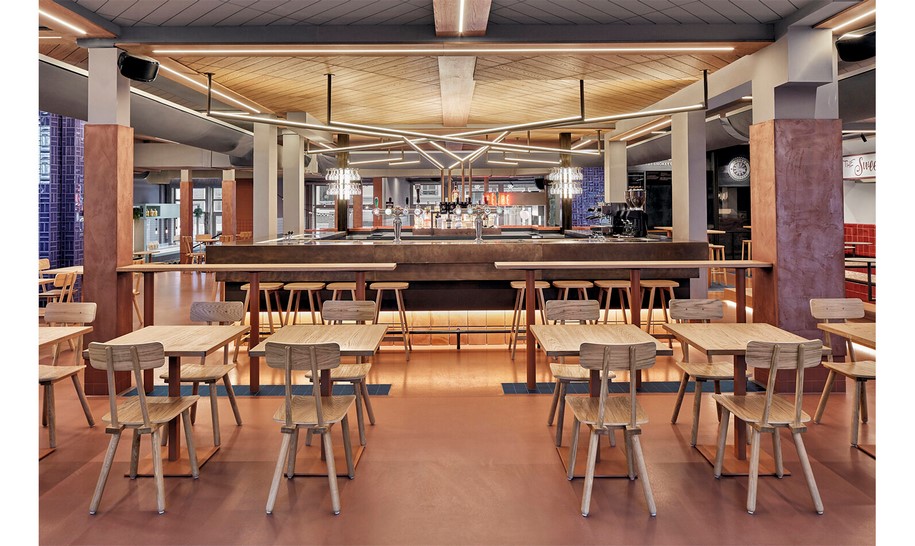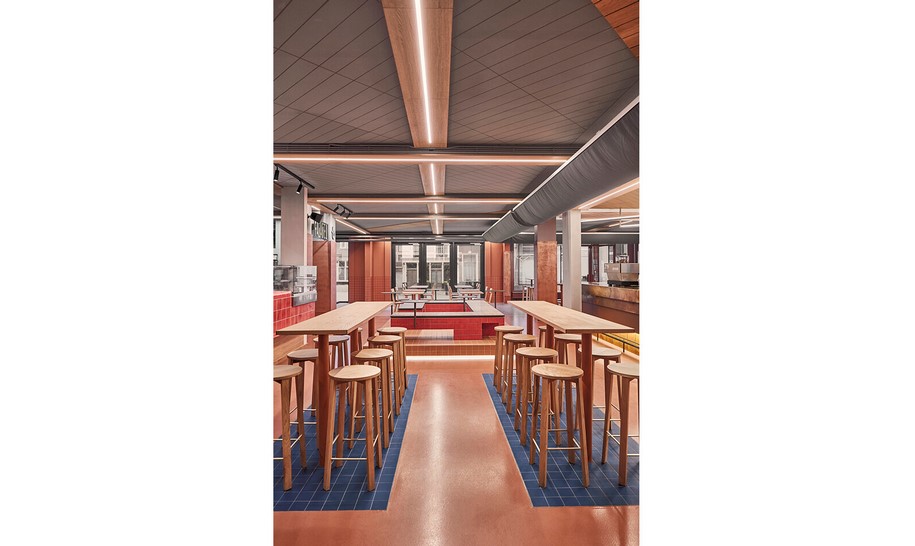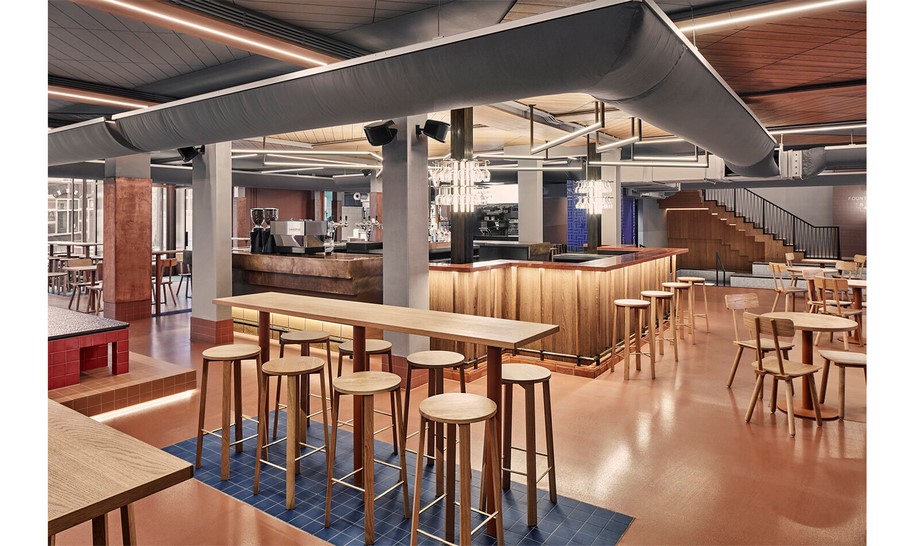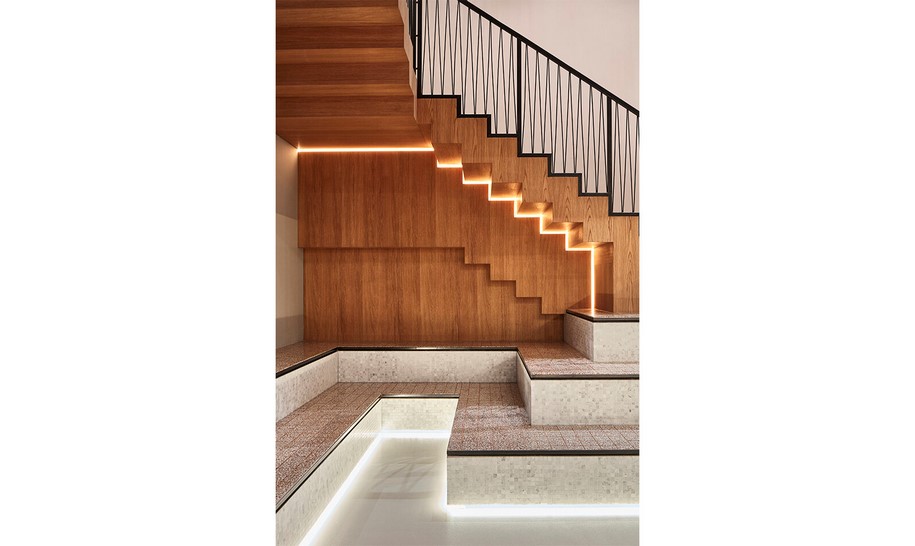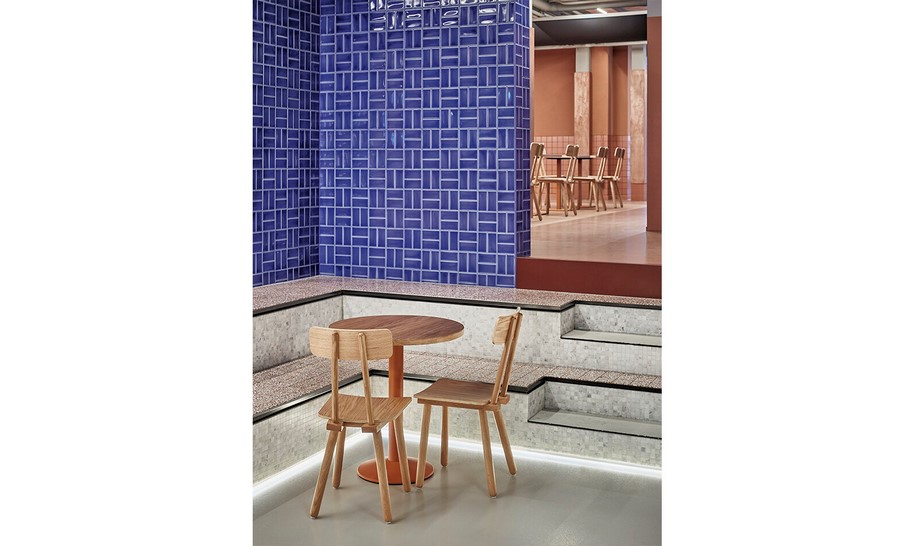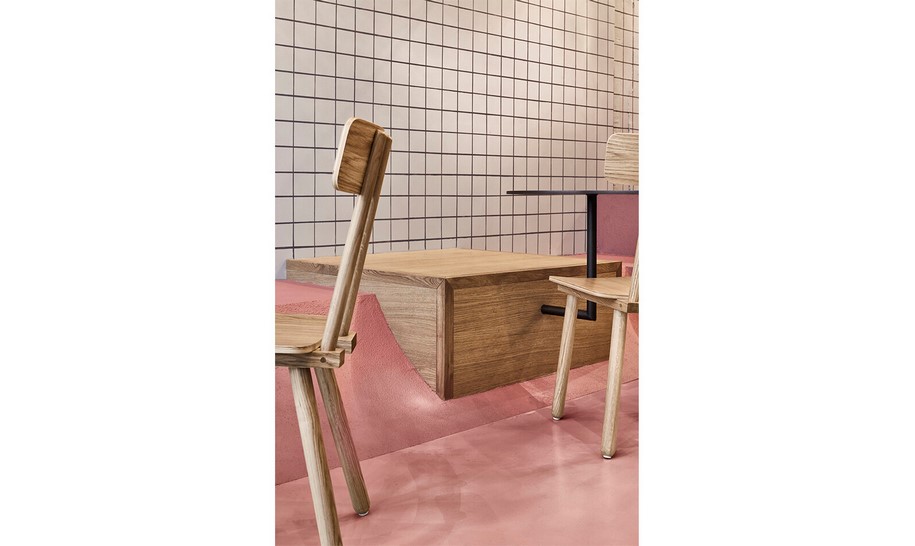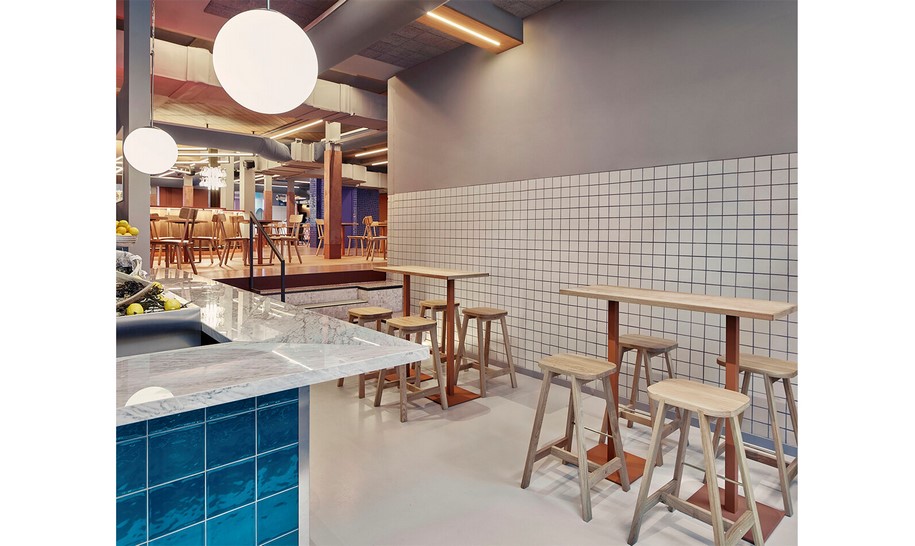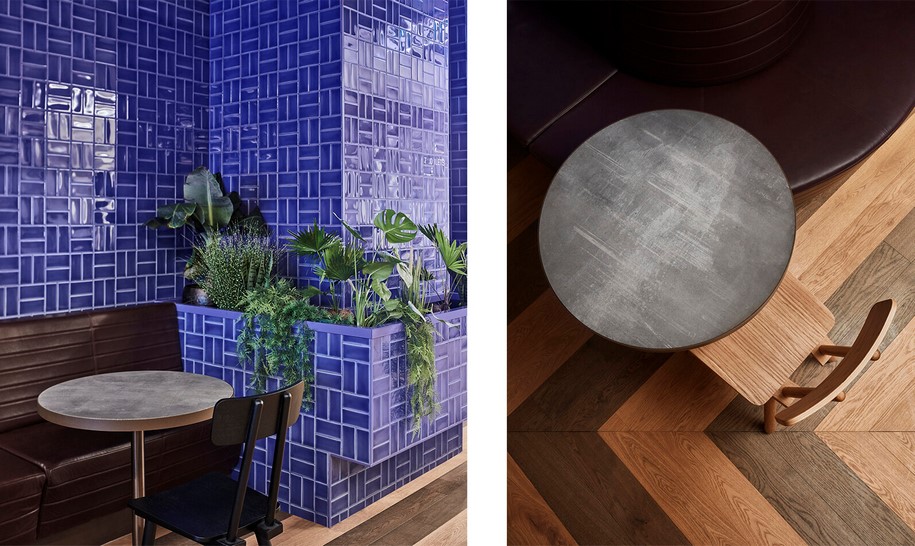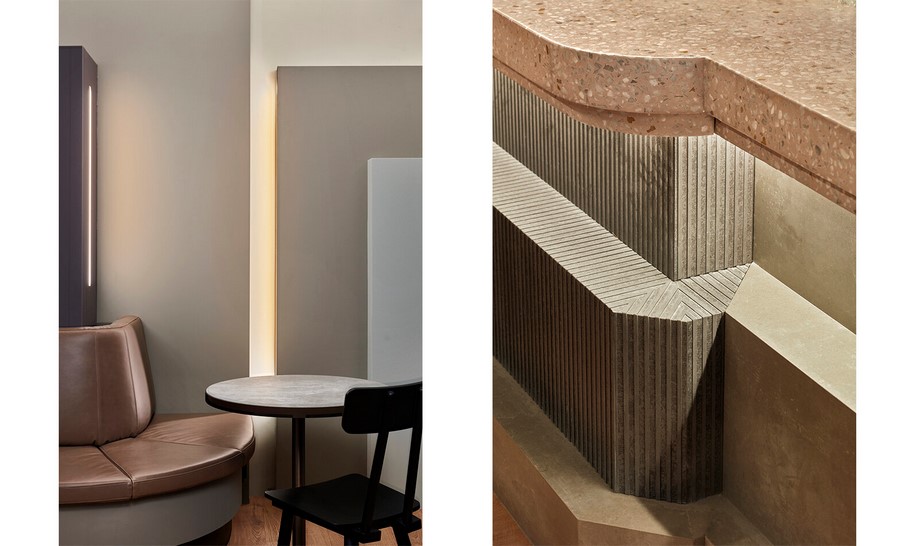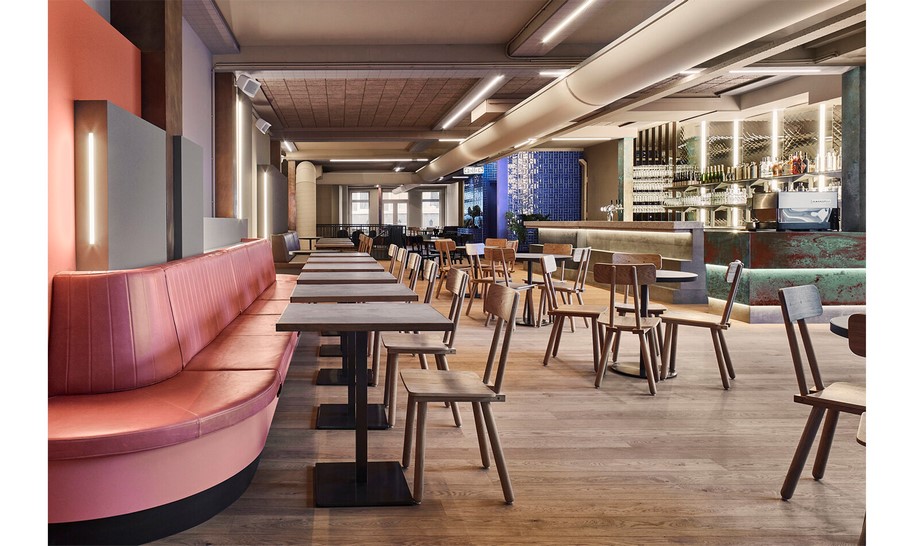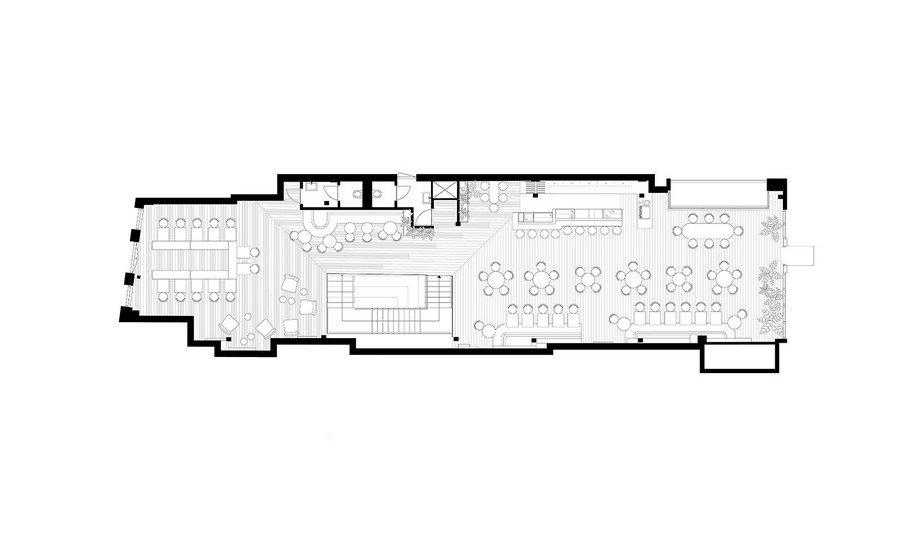Studio Modejefsky designed the new Foodhallen venue in the Hague by translating seven unique elements which can be found in all the typical urban squares into contemporary architectural components.
-text and images provided by the authors
Fans of the carefully curated Foodhallen venues will be no doubt excited about the latest location opening its doors this autumn in the Hague. After two intensely popular food courts in Amsterdam and Rotterdam, the most recent venue is located within Haagsche Bluf – a hidden away area of luxury shops and contrasting architectural styles. With an interior designed by Studio Modijefsky, the brand-new hall is a vibrant space to enjoy local people and flavours.
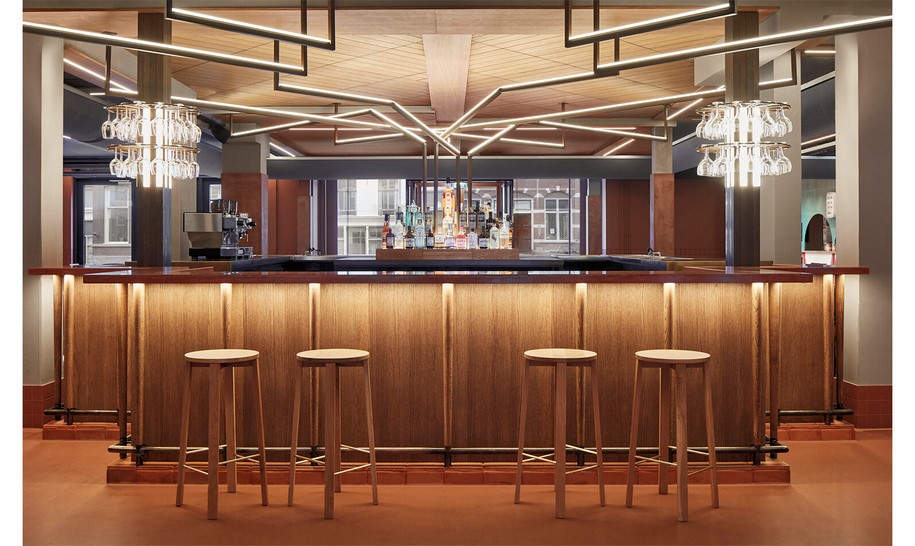
Wrapped around an internal courtyard of the Haagsche Bluf, the food court spreads across three adjoining buildings, connecting multiple floor levels and irregular structural grids.
The new design simplifies the original chaotic ‘forest’ formed of existing columns, beams and staircases, turning the dark and low interior into an open public space heavily inspired by the tradition of the greatest European piazzas.
For the basis of the concept Studio Modijefsky chose seven unique elements which can be found in all the typical urban squares: landmarks, striking paving, fountains, stairs, merchant stalls, playgrounds and statues.
Each of those objects has been translated into a contemporary architectural component, forming a new design language which links together the spaces forming the venue.
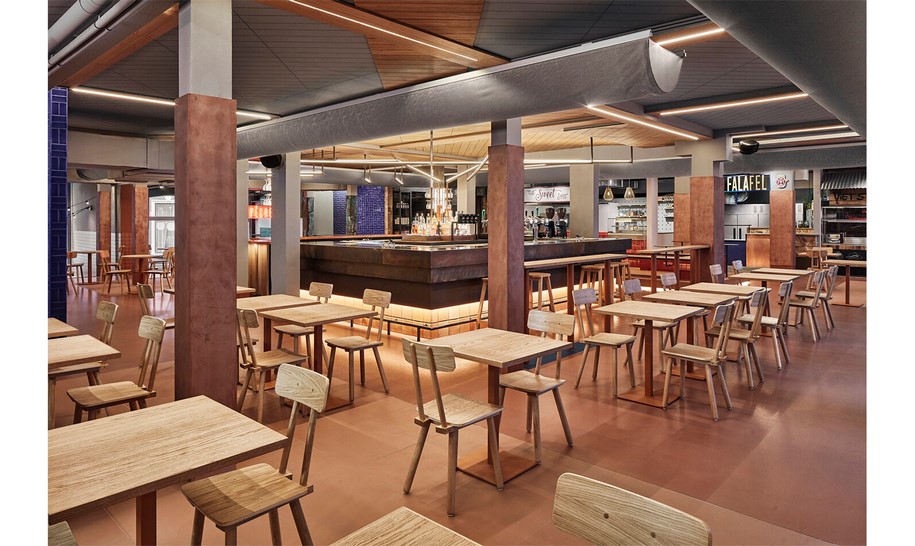
The most prominent, iconic part of the urban landscape – the landmark – is represented by a centrally positioned bar, divided into two parts.
The large main bar faces the entrances, while the opposite side forms a more intimate cocktail bar. Both volumes are finished with bronze, red marble and terracotta tiles, seamlessly merging with the floor and plinths of columns. The tiles come in various sizes and colours, mixed with poured flooring, referencing paving patterns used in urban squares, differentiating or connecting different levels in space. Various floor heights have been used to their advantage, with large tiled benches raising from the ground, forming custom fixed seating arrangements.
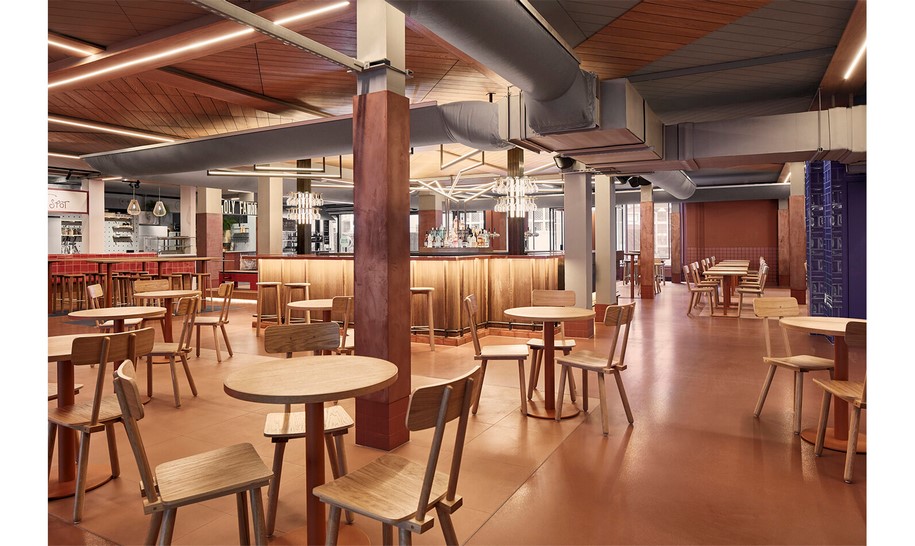
Another structural element reinvented as a social place for people to gather on is a large staircase.
Previous strictly practical stairs were replaced by a large bespoke structure – a perfect meeting point which can be used as makeshift seats and tables. Made of wood with terrazzo and mosaic tiles and visible from various points within the venue, it also invites people to explore the upstairs bar. Throughout the space each corner has been thoughtfully considered and turned into the best possible party spot, offering endless opportunities for both large groups and more private gatherings. Even the smallest room of the whole interior has been turned into a playground mimicking skateboarding half-pipe – a space which can double as a dancefloor.
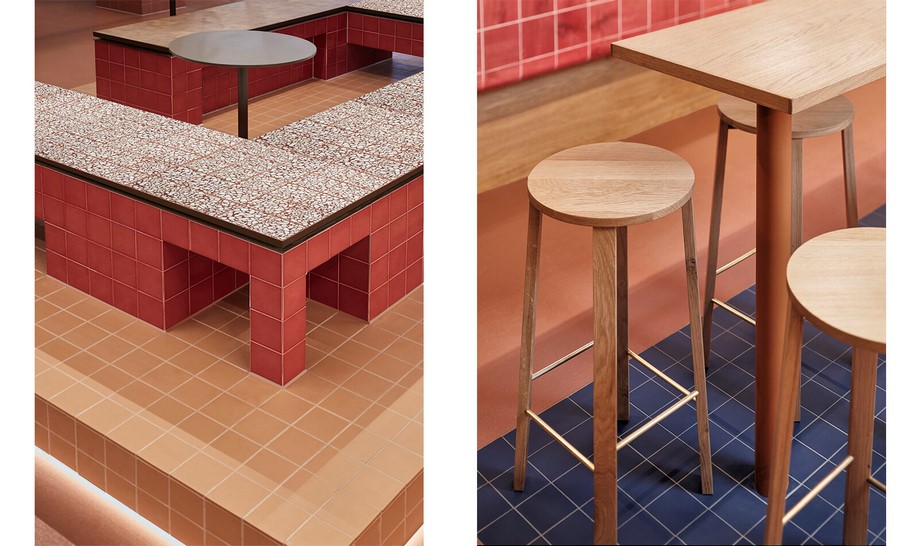
Statues, as symbols of the historical past, are represented by structural columns.
Their shapes and finishes differ depending on their position within the space. Columns surrounding the bar are the most sculptural, finished with bronze facing material. Chosen supporting walls clad in dark blue tiles, combined with integrated light elements, plants and oxidised copper are an abstract representation of fountains, bringing colour into the interior. Remaining columns are clad in brass, yet another material taken from the tradition of the Mediterranean piazzas.
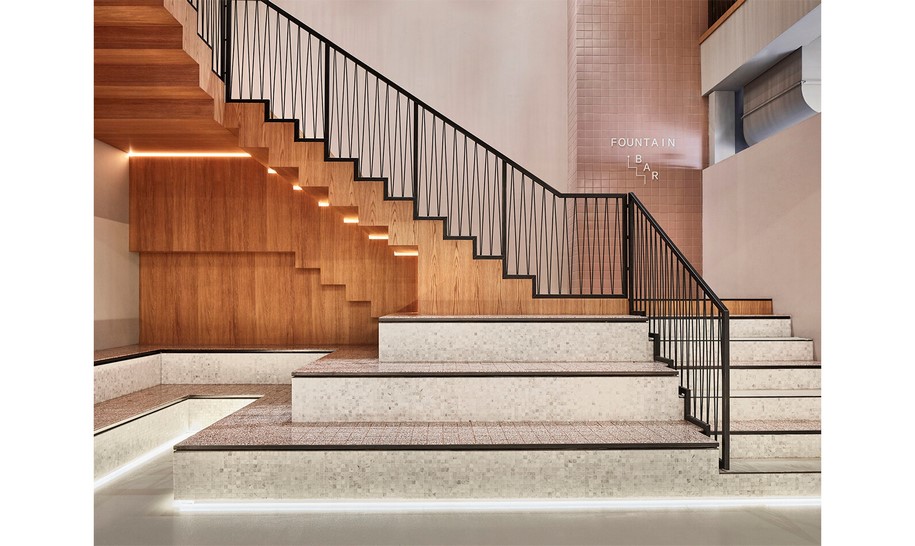
The final symbolic element of the interior: the food stalls, representing traditional merchant’s stalls, are located on the ground floor of the building.
Placed on the outskirts of the open space, 12 stalls come in three different sizes and unique graphic identities, chosen by the vendors themselves. This posed a significant challenge of creating clear design guidelines for the stalls’ owners – rules which would not restrain the creativity of each brand, but at the same time result in a wholesome interior in its own right. The overall space must be a blank canvas for The Hague’s street food scene, while remaining a signature Foodhallen venue full of unique character.
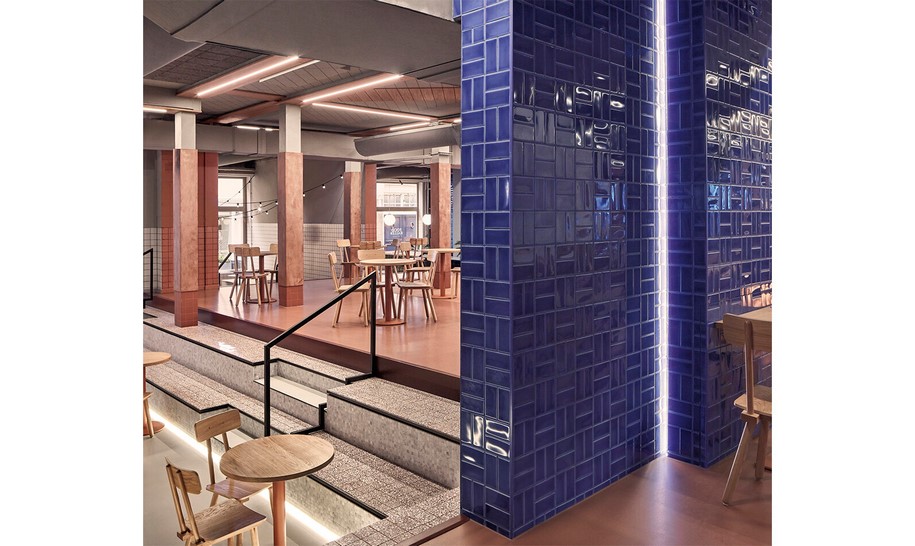
Contemporary features such as striking brass chandelier spreading above the bar and clear lines of the LED lights placed on the undersides of the beams add a dynamic graphic layer to the interior. Their stark rhythm, interrupted by a square layer of structural beams, emphasizes central position of the bar within the space. Hard materials and lines are alleviated by a warmer layer of loose wooden furniture and green plants.
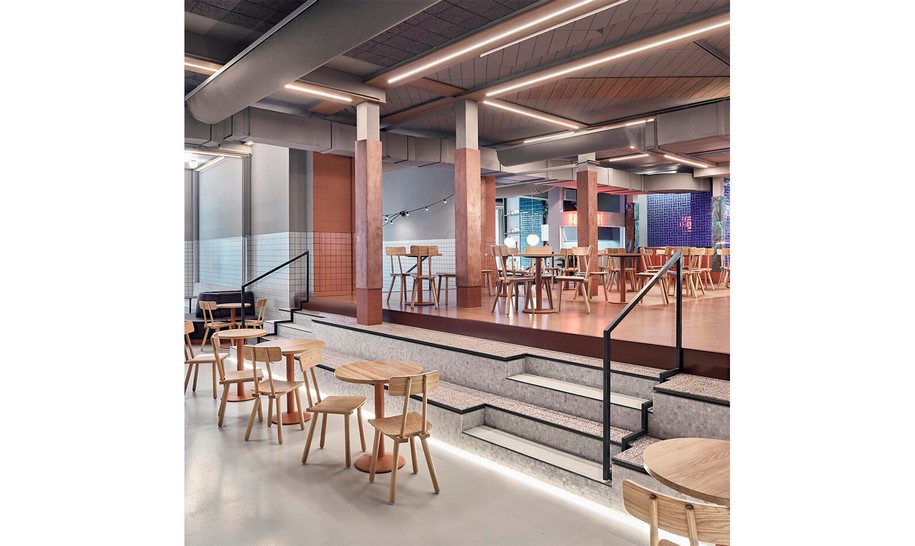
In comparison with the bustling ground floor, the upper level of Foodhallen has a slightly brighter and more organised feel. Here the landmark is a bold fountain bar made of travertine stone, turquoise oxidised copper and light-coloured terrazzo top. Strong vertical lines make the space optically taller, while the combination of mirrors and light imitates water running down the back bar. The floor of the upstairs space is made of wooden planks forming a geometrical pattern, once again merging into elevated custom seating elements.
Existing structural elements such as wall piers are highlighted and celebrated by becoming a part of an abstract wall composition made of diverse lights, panels and finishes.
By using graphic lines, clear material palette and conceptual symbols, Studio Modijefsky has created the perfect modern indoor piazza.
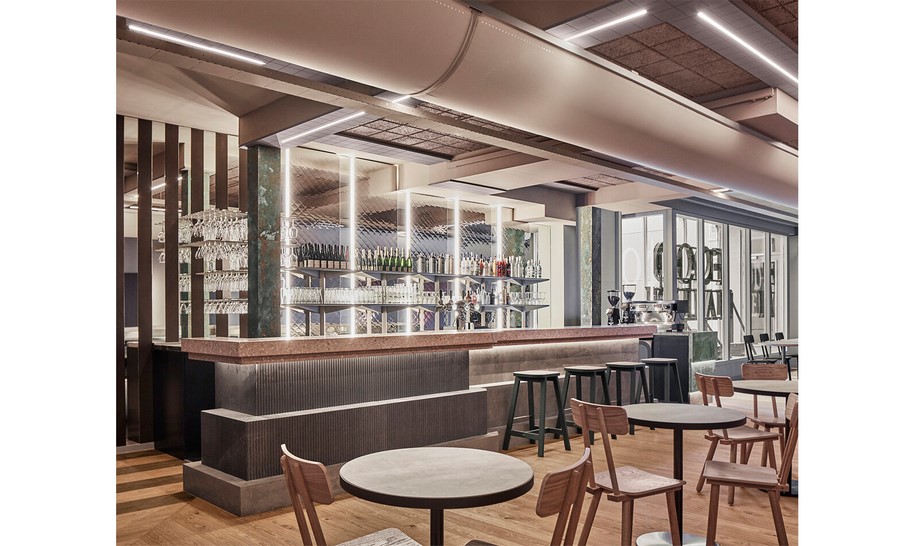
A versatile and inviting urban landscape filled with quirky features, perfect for any occasion. While Foodhallen concept prides itself on celebrating cuisines and flavours, it’s the new vibrant, intricate interior which will keep you returning.
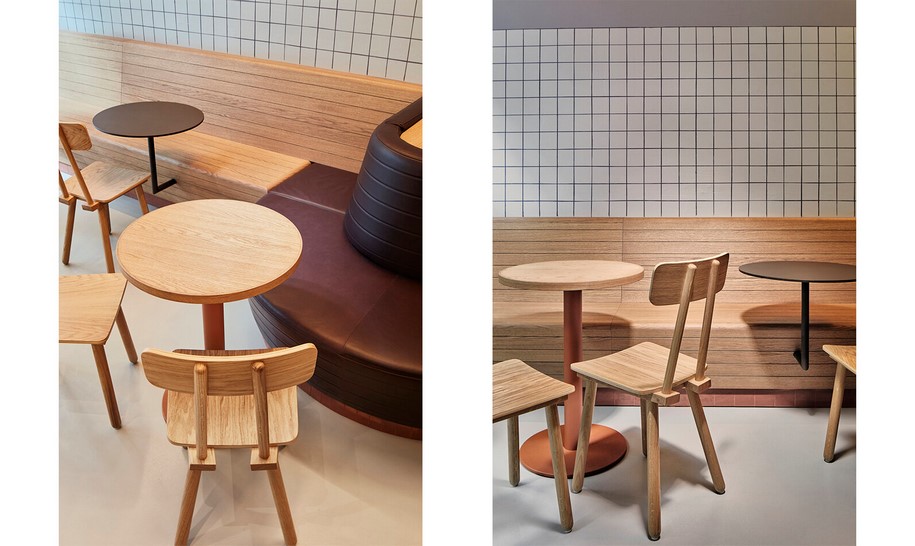
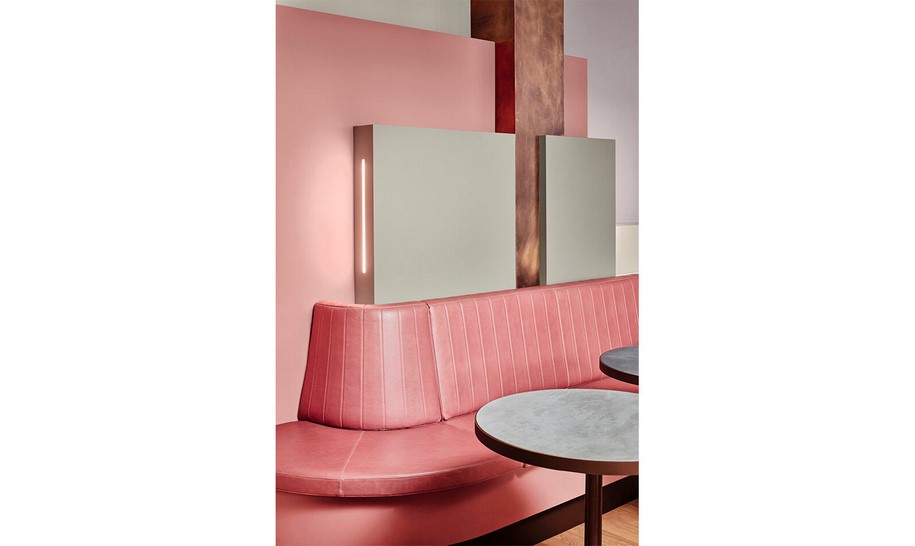
Plans
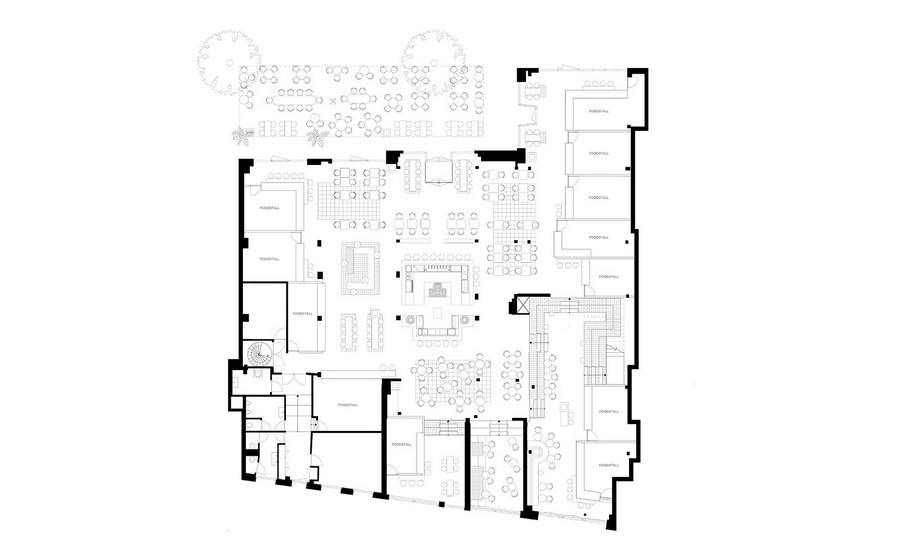
Facts & Credits
Project title Foodhallen Den Haag
Location The Hague, The Netherlands
Client Foodhallen
Design Studio Modejefsky
Team Esther Stam, Natalia Nikolopoulou, Zahra Rajaei, Nancy Katri, Christel Willers, Maite Margalho
Type Interior design
Program food court, bar & event space
Dat October 2019- realised
Area 1256 m2
Photography Maarten Willemstein
About Studio Modijefsky
Studio Modijefsky is an interior architecture studio founded by Esther Stam in 2009. Its home in the centre of Amsterdam hosts an international team of architects and interior designers who provide a total creative service for spatial interventions for clients that range from hotels to boutiques and bars to spas. The nine women that currently form the studio carefully design everything that is seen, passed and touched by a visitor for the duration of their stay whether it’s five seconds or five hours.
The worlds Studio Modijefsky creates need to make sense until the very last detail. Achieving this level of quality requires a large team of professionals – not just designers but painters, electricians, craftsmen, light makers, shop fitters, and contractors – pushing their limits to perform at their best. This level of collaboration is only possible with regular contact, so Studio Modijefsky regularly visits building sites and workshops where the interior and its contents are made to ensure optimum quality.
It’s part of the studio’s ultimate goal to reinvent the way people interact with an interior. By relating design to the location’s context (whether natural or urban) and playing with the composition of texture and materials, light and routing, height and depth, sight and tactility Studio Modijefsky creates spatial experiences that surpass all expectations and create valuable new memories.
READ ALSO: Ilya Botanic Suites in Steni Vala, Alonissos | A31 ARCHITECTURE, Praxitelis Kondylis
